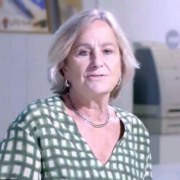Virtual reality: pros and cons for science communication
Science engagement organisations have a wealth of potential content for virtual and augmented reality applications. However there are a lot of questions about cost, operations and these new technologies’ validity as interpretation tools.
How is the use of these new technologies most effective? Does VR aid learning and visualising the invisible? Is it technology for technology’s sake or can VR and AR engage audiences more effectively than other interpretation tools?
We will explore funding sources for the development of factual content and discuss working with technology partners such as Samsung and Oculus. We will also hear how scientists can directly use new technologies to inspire a love of learning as well as explain their research. Participants will try out gears and discuss their use in programming, visitor engagement and beyond-the-walls engagement.
Facilitator
Audience Engagement Advisor
Session speakers
Visitors and Local Engagement, head
CERN has recently started a project to produce VR clips internally. The goals are: allowing people who cannot physically come to CERN an on-site experience; giving access to places not open to the public; representing phenomena at unreachable scales etc. Some clips have been used at specific events and will soon be available for download on CERN’s website. We will share our experience of VR storytelling, VR shooting techniques, CGI in VR, as well as do's and don’ts when producing VR content.
Audrey O’Connell + Associates
The palaeontologist Jack Horner’s passion for the process of dinosaur science and scientific exploration can now be uniquely shared with all types of learners through personalised VR and AR experiences of discovery. The Dino Digger APP, Microsoft Hololens dinosaurs, and the Dino-Chicken research project all work with the idea that technology is a powerful tool to increase exposure and a deep understanding of new scientific theories.
We are preparing an exhibition on nature in Catalonia and the project we are working on is very new for a Museum with collections. We are not using objects but will use projections, mapping technology and interactive surfaces as our principal interpretive tools. The exhibition will open in November 2018 and in this session, I will present the project in progress and our learning so far.




